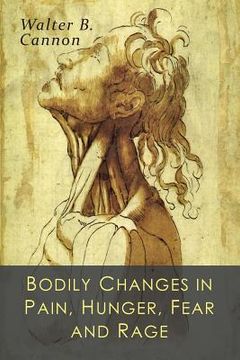Share
Bodily Changes in Pain, Hunger, Fear and Rage: An Account of Recent Researches into the Function of Emotional Excitement (in English)
Walter B. Cannon
(Author)
·
Martino Fine Books
· Paperback
Bodily Changes in Pain, Hunger, Fear and Rage: An Account of Recent Researches into the Function of Emotional Excitement (in English) - Cannon, Walter B.
Choose the list to add your product or create one New List
✓ Product added successfully to the Wishlist.
Go to My WishlistsIt will be shipped from our warehouse between
Tuesday, June 11 and
Wednesday, June 12.
You will receive it anywhere in United States between 1 and 3 business days after shipment.
Synopsis "Bodily Changes in Pain, Hunger, Fear and Rage: An Account of Recent Researches into the Function of Emotional Excitement (in English)"
2016 Reprint of 1925 Edition. Full facsimile of the original edition, not reproduced with Optical Recognition Software. Cannon is best known for his work on the "Fight or Flight" response. In 1915, he coined the term "fight or flight" to describe an animal's response to threats in "Bodily Changes in Pain, Hunger, Fear and Rage: An Account of Recent Researches into the Function of Emotional Excitement." He is also credited with being one of the first to understand the significance of "Homeostasis" in the self-regulation of each human being. He developed the concept of "Homeostasis" from the earlier idea of Claude Bernard of milieu interieur, and popularized it in his book "The Wisdom of the Body" in 1932. Cannon presented four tentative propositions to describe the general features of homeostasis: Constancy in an open system, such as our bodies represent, requires mechanisms that act to maintain this constancy. Cannon based this proposition on insights into the ways by which steady states such as glucose concentrations, body temperature and acid-base balance were regulated. Steady-state conditions require that any tendency toward change automatically meets with factors that resist change. An increase in blood sugar results in thirst as the body attempts to dilute the concentration of sugar in the extracellular fluid. The regulating system that determines the homeostatic state consists of a number of cooperating mechanisms acting simultaneously or successively. Blood sugar is regulated by insulin and other hormones that control its release from the liver or its uptake by the tissues. Homeostasis does not occur by chance, but is the result of organized self-government.
- 0% (0)
- 0% (0)
- 0% (0)
- 0% (0)
- 0% (0)
All books in our catalog are Original.
The book is written in English.
The binding of this edition is Paperback.
✓ Producto agregado correctamente al carro, Ir a Pagar.

